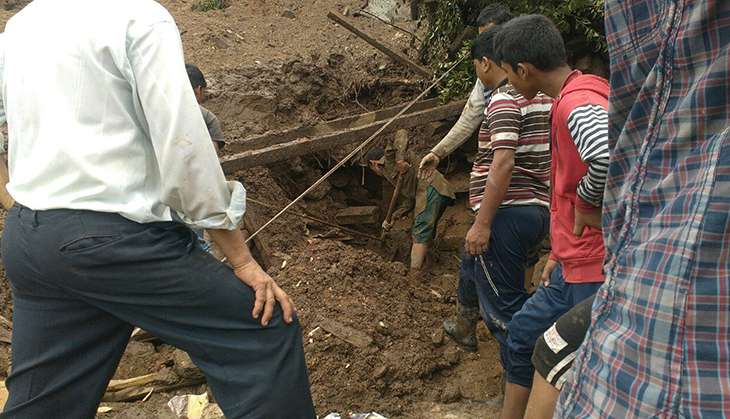Another flood: hasn't Uttarakhand learnt any lessons?

Flash floods brought on by a cloudburst have killed at least 30 people in Chamoli and Pithoragarh districts of Uttarakhand, and washed away many homes. At least seven people are missing.
The victims include people living along the river Mandakini in Chamoli. Alaknanda, another tributary of the Ganga in the state, is flowing past the danger mark.
Although termed flash floods, they didn't come out of the blue. In a press note issued on 30 June, the Met department had predicted heavy rainfall of about 65-115 mm, spread "fairly widely" over 51-75% of Uttarakhand. Yet, the state appears to have unprepared for the floods.
Has the government learnt nothing from the past? The images of swollen rivers are a grim reminder from three years ago, when a cloudburst caused the same rivers to be in spate, and thousands perished.
The 2013 floods, and many others in the region before and since, pointed to excessive, unplanned "development" in the river valleys as the major cause. In each, the first victims were those living in buildings situated precariously close to the rivers.
Also read: #ChennaiFloods: unlearnt lessons & a disaster told in numbers
The havoc wreaked by the floods, caused when a cloudburst led to about four times the average rainfall, exposed a lack of planning that made the fatalities much worse than the scale of the disaster. Still, little has changed since.
Hridayesh Joshi, a journalist with NDTV India, recently published a book on the 2013 floods. He writes: "Despite a series of disasters in Uttarakhand, the government has no specific policy for development and planned construction keeping the environmental issues in mind."

Failing the people
While administrators and planners have turned a blind eye to the hard facts, the media has failed to report on the gradual degradation of the Himalayas.
"Since the state leaders themselves are involved in hospitality and real estate, both overtly and covertly, no one actively discourages illegal construction. Big players in real estate and the hotel industry have, of late, also gained political prominence. In other words, a nexus is in place to set in motion the systematic destruction of these hills. Most of this construction activity is being carried out in a most unscientific and irresponsible manner," Joshi writes.
Also read: Small steps, big change: 4 simple ways to prevent severe floods
The 2013 cloudburst was an extreme case. The year before there had been flash floods in the state, which killed 30 people and injured 40 others. The current floods appear similar in scale to the 2012 floods, rather than those in 2013.
The State Disaster Mitigation and Management Centre's report on the 2012 floods is enlightening: "Almost all the devastation has taken place in the proximity of the river bank and is caused primarily by abnormally high precipitation in the catchment of the streams. This is, however, no abnormal phenomenon and the river morphology in the area shows evidence of the occurrence of similar events in the past. One can, therefore, deduce that the infrastructure and other facilities that got destroyed in the event were located at wrong places and due consideration was not given to the possibility of high floods in the adjoining rivers and streams."
In other words, the rainfall wasn't exceptional and the swollen river merely followed its natural course. It is us who got in its way.
Four years after the report was published - a cloudburst caused devastating floods in the interim - it doesn't look like the government has done anything. Most of the casualties continue to be from houses washed away because they were too close to the river.
Also read: 'Save Ganga' handed over to corporates: masterstroke or disaster?
First published: 1 July 2016, 22:52 IST





![BJP's Kapil Mishra recreates Shankar Mahadevan’s ‘Breathless’ song to highlight Delhi pollution [WATCH] BJP's Kapil Mishra recreates Shankar Mahadevan’s ‘Breathless’ song to highlight Delhi pollution [WATCH]](https://images.catchnews.com/upload/2022/11/03/kapil-mishra_240884_300x172.png)

![Anupam Kher shares pictures of his toned body on 67th birthday [MUST SEE] Anupam Kher shares pictures of his toned body on 67th birthday [MUST SEE]](https://images.catchnews.com/upload/2022/03/07/Anupam_kher_231145_300x172.jpg)






